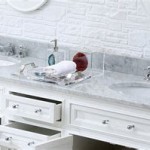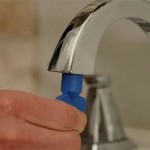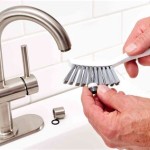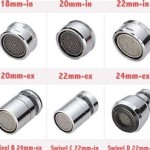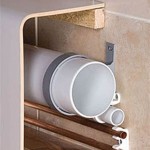How To Take Tiles Off a Bathroom Wall Without Breaking Them
Removing tiles from a bathroom wall without breakage is a delicate operation that demands patience, the correct tools, and a meticulous approach. While achieving a 100% breakage-free removal rate is often unrealistic, employing proper techniques significantly increases the chances of preserving a substantial number of tiles for potential reuse or other purposes. This article provides a detailed guide on how to remove bathroom tiles while minimizing damage.
The primary motivation for carefully removing tiles is often reuse. Whether for matching replacement tiles in another area or artistic projects, undamaged tiles hold value. Furthermore, removing tiles intact can be a more cost-effective solution than purchasing entirely new materials, especially if the tile design is discontinued or rare. The success of this endeavor hinges on understanding the adhesive properties, the tile material, and the structural integrity of the underlying wall.
Preparing for Tile Removal
Before commencing any tile removal, preparation is crucial. This involves gathering the necessary tools and materials, as well as preparing the work area to minimize mess and potential hazards.
Essential Tools and Materials:
* Grout Removal Tool: This can be a manual grout saw, a power grout removal tool, or even a utility knife. A grout saw with a carbide blade is often preferred for its durability. * Putty Knife or Scraper: Several sizes of putty knives and scrapers are recommended, ranging from narrow to moderately wide, to accommodate different tile sizes and grout line widths. * Hammer: A standard claw hammer is suitable for gentle tapping and prying, but a rubber mallet can also be useful for softer blows. * Chisel: A small, sharp chisel provides precision for separating tiles, particularly in corners or tight spaces. * Heat Gun or Hair Dryer: Applying heat can soften the adhesive holding the tiles in place, making removal easier. * Safety Glasses: Protecting the eyes from flying debris is paramount. * Gloves: Work gloves protect hands from sharp edges and adhesive residue. * Dust Mask or Respirator: Grout removal generates significant dust, making respiratory protection essential. * Drop Cloths or Plastic Sheeting: Covering the floor and surrounding surfaces prevents damage and simplifies cleanup. * Buckets or Containers: These are used for collecting removed tiles and grout debris. * Spray Bottle with Water: Applying water can soften grout and adhesive, particularly if they are older or more resistant. * Pry Bar (Optional): A small pry bar can be used to gently lift tiles once they have been loosened. * Stud Finder: Locating studs can help to avoid accidentally damaging the wall structure behind the tile.Preparing the Work Area:
Begin by clearing the bathroom of any movable objects. Cover the floor, toilet, sink, and bathtub with drop cloths or plastic sheeting to protect them from falling debris and scratches. Seal off the doorway with plastic sheeting and tape to contain the dust. Ensure adequate ventilation by opening a window or using a fan. Wear safety glasses, gloves, and a dust mask or respirator throughout the entire process.
Removing the Grout
Grout removal is the initial and most critical step in removing tiles without breakage. The goal is to completely eliminate the grout surrounding each tile to allow for easier separation from the wall.
Using a Manual Grout Saw:
A manual grout saw is a simple tool that requires physical effort. Hold the saw firmly and run the blade along the grout lines, applying even pressure. Work slowly and methodically, ensuring that all grout is removed from around each tile. Be careful not to scratch the tile surfaces with the saw blade. Overlap strokes to ensure complete grout removal. This method provides good control, reducing the risk of tile damage, but it is time-consuming.
Using a Power Grout Removal Tool:
A power grout removal tool significantly speeds up the process. Select the appropriate blade for the grout width and type. Hold the tool firmly and guide it along the grout lines, allowing the tool to do the work. Avoid applying excessive pressure, which can damage the tiles. Be particularly cautious in corners and tight spaces. Power tools generate more dust, so ensure adequate ventilation and a well-fitted respirator. Practice on a less conspicuous area first to get a feel for the tool's operation.
Using a Utility Knife:
A utility knife can be effective for removing thin grout lines or for cleaning up residual grout after using other methods. Use a sharp blade and carefully score the grout lines. Be extremely cautious to avoid cutting yourself or scratching the tiles. This method is best suited for small areas or detailing work.
Softening Stubborn Grout:
If the grout is particularly hard or resistant, spraying it with water or a grout softening solution a few minutes before removal can help. The moisture will penetrate the grout, making it easier to remove. Be careful not to over-saturate the area, as excessive moisture can damage the underlying wall. In cases of epoxy grout, specialized epoxy grout removers are necessary.
Separating the Tiles from the Wall
Once the grout has been completely removed, the next step is to carefully separate the tiles from the wall. This requires a combination of heat, gentle pressure, and patience.
Applying Heat:
Using a heat gun or hair dryer, apply heat to the surface of the tile for several minutes. This will soften the adhesive behind the tile, making it easier to remove. Move the heat gun or hair dryer slowly and evenly over the tile surface. Avoid overheating any one area, as this can damage the tile or the underlying wall. Test the tile's looseness periodically by gently attempting to lift it with a putty knife.
Using a Putty Knife or Scraper:
Insert a putty knife or scraper into the grout lines between the tile and the wall. Start at one corner and gently pry the tile away from the wall. Work slowly and carefully, applying even pressure. If the tile is resistant, try applying more heat or using a different size putty knife. Avoid forcing the tile, as this can cause it to break. Work around the edges of the tile, gradually loosening it from the wall. If the tile appears to be firmly attached in certain areas, try tapping it gently with a hammer and a block of wood to help break the adhesive bond.
Using a Chisel:
In situations where the tile is particularly stubborn or located in a tight space, a small chisel can be used. Position the chisel at an angle between the tile and the wall, and gently tap it with a hammer. Work slowly and carefully, avoiding excessive force. The chisel should help to separate the tile from the wall without causing it to break. This method requires precision and control to prevent damage.
Using a Pry Bar (Optional):
A small pry bar can be used to gently lift tiles once they have been loosened. Insert the pry bar into the grout line and carefully pry the tile away from the wall. Be extremely cautious not to damage the surrounding tiles or the underlying wall. This method is best suited for larger tiles that are partially detached.
Addressing Stubborn Tiles:
If a tile refuses to budge despite repeated attempts, it may be necessary to break it intentionally to remove it. Cover the tile with a cloth or towel to contain the debris, and then carefully break it into smaller pieces using a hammer and chisel. Remove the pieces one at a time, taking care not to damage the surrounding tiles or the wall. This is a last resort, but it may be necessary to prevent further damage to the wall.
Cleaning and Inspecting the Wall
After removing the tiles, the wall will likely be covered in adhesive residue. Cleaning this residue is essential before any new tiles or other wall coverings can be installed. Inspecting the wall for damage is also crucial to ensure that it is structurally sound.
Removing Adhesive Residue:
There are several methods for removing adhesive residue from the wall. One common method is to use a putty knife or scraper to scrape off as much of the residue as possible. A heat gun can also be used to soften the adhesive, making it easier to remove. Chemical adhesive removers are also available, but they should be used with caution, following the manufacturer's instructions carefully. Always wear gloves and eye protection when using chemical removers. Mineral spirits or acetone can also be effective for removing adhesive residue, but they should be used in a well-ventilated area.
Inspecting the Wall for Damage:
Once the adhesive residue has been removed, carefully inspect the wall for any signs of damage. Look for cracks, holes, or water damage. If any damage is found, it should be repaired before any new tiles or wall coverings are installed. Small cracks can be filled with patching compound, while larger holes may require more extensive repairs. Water damage should be addressed immediately to prevent further deterioration of the wall structure. Ensure the wall is clean, dry, and level before proceeding with any new tile installation.

Easy Diy Guide On Removing Tiles From Walls Fantastic Handyman Au

How To Remove A Tile Backsplash Homeserve Usa

How To Remove Wall Tiles

The Best Way To Remove Old Shower Tile

How To Remove Wall Tiles 11 Steps With Pictures Wikihow

How To Remove Tile Without Breaking

How To Remove Wall Tiles Without Breaking Them

Preparing Walls For Tiling Removing Old Tiles Bathroom Guru

How To Remove Tile Without Breaking

How Do I Remove The Adhesive From 1950 S Pink Wall Tiles Bathroom Tile Removing
Related Posts
